Revealed: the surprising reason why almost no national flag has the color purple
From the Union Jack to the Stars and Stripes, most national flags don’t stray far from red, white and blue.
And while some flags may seem extremely colorful, there’s one color you’ll almost never see.
In a TikTok video, radio host Dean Jackson shares the strange reason why almost no country uses the color purple in its flag.
Of the 195 countries in the world, only three have a little bit of purple on their flag.
And the bizarre explanation goes back to the ancient world and the exorbitant price of a rare sea snail.
The reason that virtually no flag in the world uses the color purple can be traced back to this predatory sea slug
In the video, Jackson explains, “No country uses purple as the base for its flag or even has a purple panel on it, and the reason is all thanks to this little snail.
“It’s not a purple flag-munching snail or anything like that, but most countries’ flags were designed several centuries ago and the only way to produce purple dye at that time was by crushing sea slugs.”
As Mr. Jackson explains, until the mid-19th century, the only way to obtain purple pigments was through the mucus of a rare sea snail, the Murex snail.
The predatory sea snails live only in the eastern Mediterranean and off the Atlantic coast of Morocco.
The dye was known as Tyrian purple, a reference to the city of Tyre, in modern-day Lebanon, from which the Phoenician traders controlled the flow of dye.
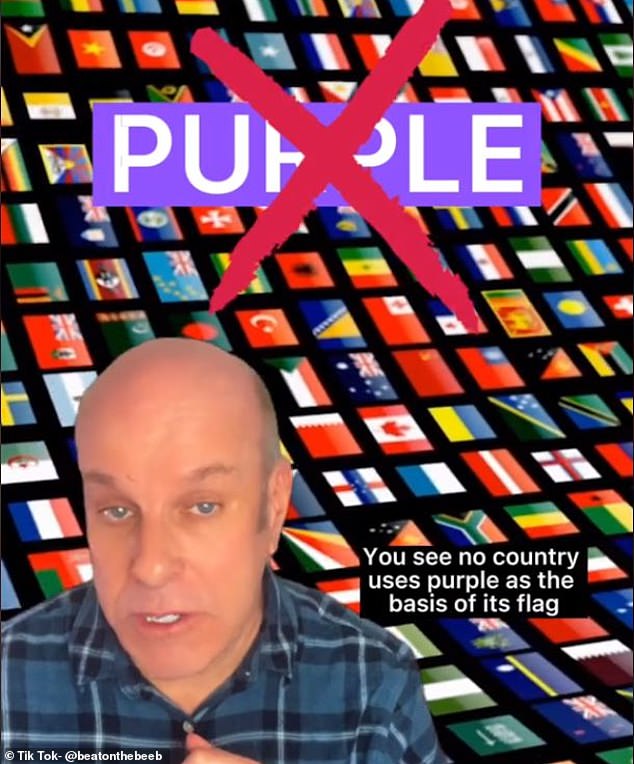
When countries designed their flags, purple could only be obtained from the slime of sea snails and it was far too expensive to paint the flags of an entire country with it.
The snails were lured into baited traps or collected by hand before their mucus glands were carefully cut open with a small knife.
It may take about 10,000 snails to produce one gram of dye, perhaps enough to color the hem of a garment.
And even though the basic ingredient was well known, the Tyrian dye makers were famously secretive and kept their complex recipes hidden.
All this together made purple dye one of the most valuable substances on earth, worth more than its weight in gold.
The dye’s association with wealth and power made it a natural choice for the color of royalty throughout the ancient world.
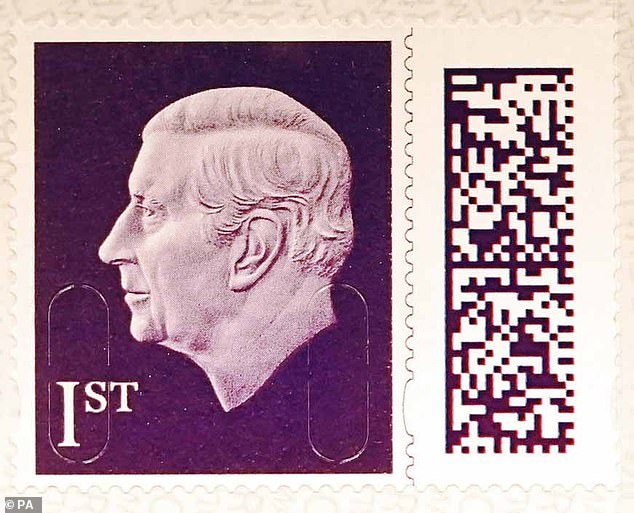
The extreme price of purple dye created an association with royalty that seems to continue to this day in the color of King Charles III’s first-class postage stamp (pictured)
Some Roman emperors even passed laws that prohibited anyone else from wearing purple clothing on pain of death.
Billions of snail shells have been found at archaeological sites around the Mediterranean, and this month Tyrian dye was found in Britain.
Researchers discovered a clump of the snail paint the size of a ping-pong ball at Carlisle Cricket Club among the remains of a Roman bathhouse.
The archaeologist who found the dye says the site may date back to 200 AD.
And it seems the British association of purple with royalty hasn’t faded yet, as King Charles III’s First Class postage stamp has been given a deep purple hue.
Mr Jackson says: ‘That made it far too expensive to color even one flag, let alone that of an entire country.
“Nowadays there are cheaper alternatives, but still only two countries in the entire world have decided to put a little bit of purple in their flags.”
Those two countries are the small island state of Dominica, with a purple Sisserou parrot, and Nicaragua, with a small amount of purple in a rainbow.
Historically, the flag of the Second Spanish Republic also featured a large purple panel, but this was only used between 1931 and 1971.
Both modern flags with purple were introduced quite recently, which could explain their break with tradition.
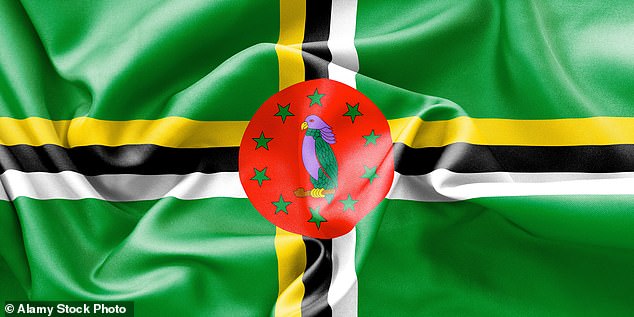
Dominica is one of only two flags to use purple, as most countries feature the national bird: the purple Sisserou parrot
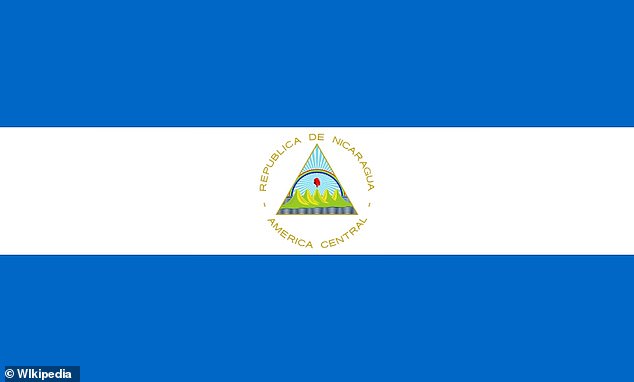
Nicaragua is the second country to have purple in its flag, with a little bit of rainbow on the coat of arms
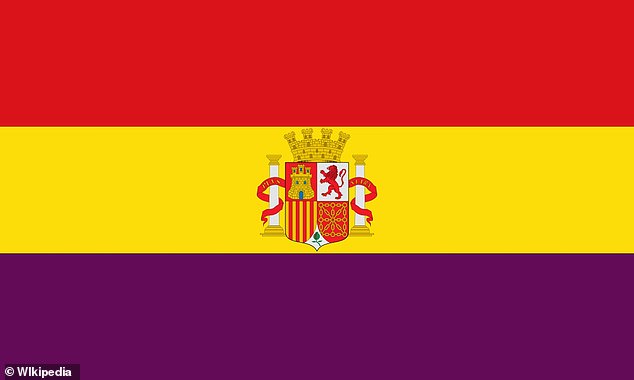
The Second Spanish Republic also used a purple stripe between 1931 and 1971, but by then purple had become much more affordable
The flag of Nicaragua has undergone a number of changes over the past 200 years, but the first addition of purple appeared in 1823 when the country was part of the United Provinces of Central America.
The current flag, which has a similar design, was reintroduced in 1908 with its purple components.
Dominica did not gain independence from British rule until 1978, when purple was as widely available as any other dye.
The reason flags can now be purple also has a fascinating history dating back to the very first synthetic dye.
In 1856, an 18-year-old chemistry student named William Henry Perkin attempted to synthesize quinine, a treatment for malaria, from coal tar.
After a failed experiment left a blackish blob, Perkin tried to wash the mistake away with alcohol, but found it turned a brilliant purple hue.
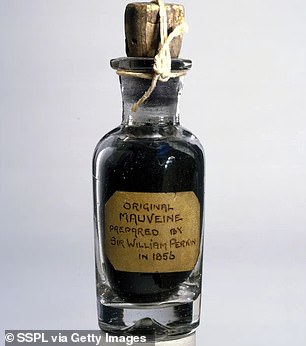
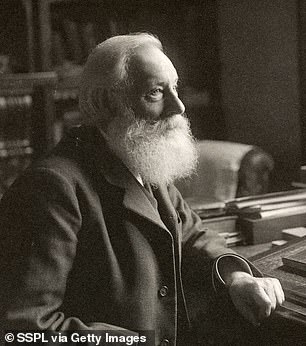
We can now see purple on flags thanks to the invention of mauve (left) by British chemist William Henry Perkin (right). At the age of 18, Perkin invented the world’s first synthetic dye and made purple available to the masses
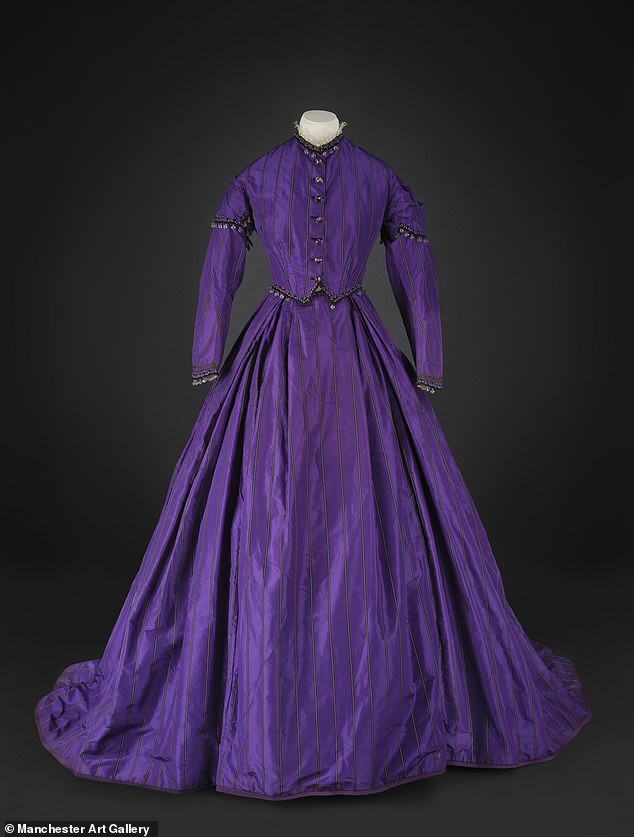
Queen Victoria herself popularized the new wave of synthetically colored clothing, such as this day dress from the late 1860s, which helped Perkin’s Mauve spread across the country and end up on a few flags.
Completely by accident, Perkin had just discovered the very first synthetic dye, which changed the history of fashion and flags forever.
By 1856, Perkin had perfected his formula and patented the dye called Perkin’s Mauve.
This would not only make Perkin a millionaire at the age of 21, but would also boost the chemical industry and pave the way for all the synthetic dyes we use today.
Production no longer requires thousands of sea snails, but purple garments become cheap and extremely fashionable.
In fact, Queen Victoria herself was a big synthetic dyer and helped popularize Mauve in the 1860s.
But as purple became more and more popular, it gradually lost its association with royalty and grandeur.
So by the time Nicaragua and Dominica came to design their current flags, purple was no more special or expensive than any other color in the rainbow.
